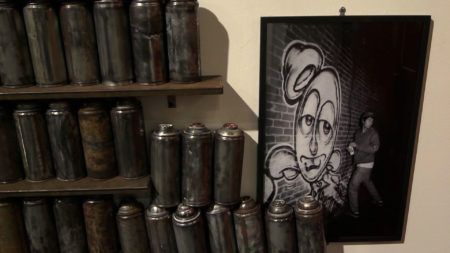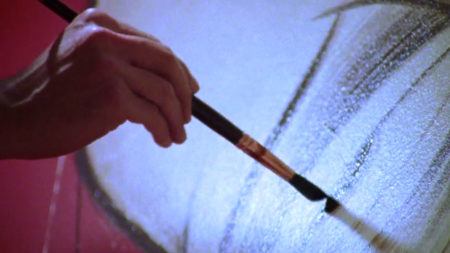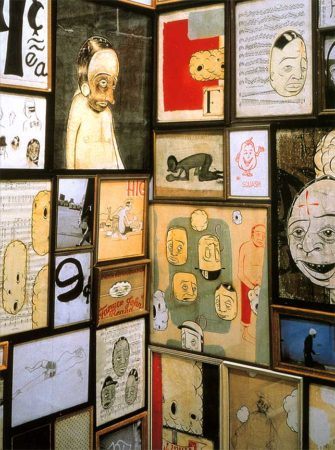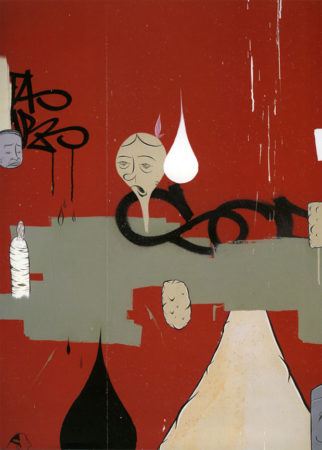Barry McGee
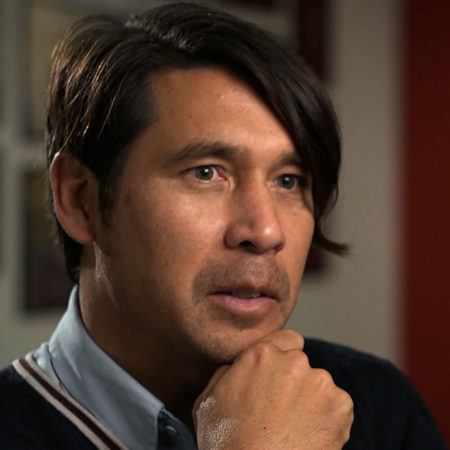
Barry McGee was born in 1966 in San Francisco, California, where he currently lives and works. He received his BFA in painting and printmaking from the San Francisco Art Institute in 1991. Taking inspiration from his upbringing in the Bay Area, folk and craft art, Mexican Muralists, geometric abstraction, and cartoons, McGee’s work balances the formal concerns of fine art with populist representations and communal modes of working. In doing so, he creates a body of work that combines the disparate worlds of street art and fine art. Through his drawings, paintings, and mixed-media installations, the artist creates a visual lexicon that addresses the struggles of contemporary urban life, looking toward his local community while building a world of his own characters, monikers, and motifs.
McGee was introduced to graffiti when he was 18 and began working under the moniker “Twist” (or “Twister,” “Twisty,” and “Twisto). His early works often used a restricted, grayscale color palette to depict figures or tag freight trains and building walls with his moniker, resisting the privatization of public space and our visual environments. As a central figure of the Mission School, an art movement inspired by the street art and culture of San Francisco’s Mission District, the artist drew upon the issues that faced the community in his work, such as commodification, gentrification, and homelessness. “Who has access to space?” asks McGee. “When I feel like the access to space is like cut off for the general public, that makes me want to do stuff on the street that much more.” His trademark icon, a male caricature with sagging eyes and a bemused expression recalls those who call the streets their home, giving a new kind of visibility to the unhoused. Later, the artist began creating indoor work on museum and gallery walls, adopting additional monikers to differentiate between his different styles of art such as “Ray Fong,” “Bernon Vernon,” and “P.Kin” and introducing color and pattern into his oeuvre.
When working inside the gallery walls, the artist uses non-traditional techniques and materials, such as tagging the walls with spray paint or incorporating surfboards, car tires, and scrap wood into the space. He combines found material with decorative geometric designs that harken to his printmaking background. In Untitled (2013), a work in his larger “boil” series, McGee constructs a site-specific installation that frames photographs, doodles, and geometric work in a clustered collage that emerges from the wall. These three-dimensional sculptures, created from upwards of 400 individual works, create a lively installation that McGee likens to a community: small parts coming together to create a larger whole. McGee also fills his museum and gallery shows with the work of other artists, including doodles, ephemera, and paintings by different artists, such as his late wife Margaret Killgallen or other street artists he admires. “I think it is so natural for them to be here, though. It would be doing a big disservice to the Bay Area if this stuff wasn’t here.” In doing so, McGee maintains his community-based practices and constant questioning and repositioning of art and ownership. Through his multi-faceted practice of worldbuilding in and outside the gallery walls, McGee looks back at his local community as the source of inspiration for the larger political and social work.
Videos 4
-
Barry McGee


